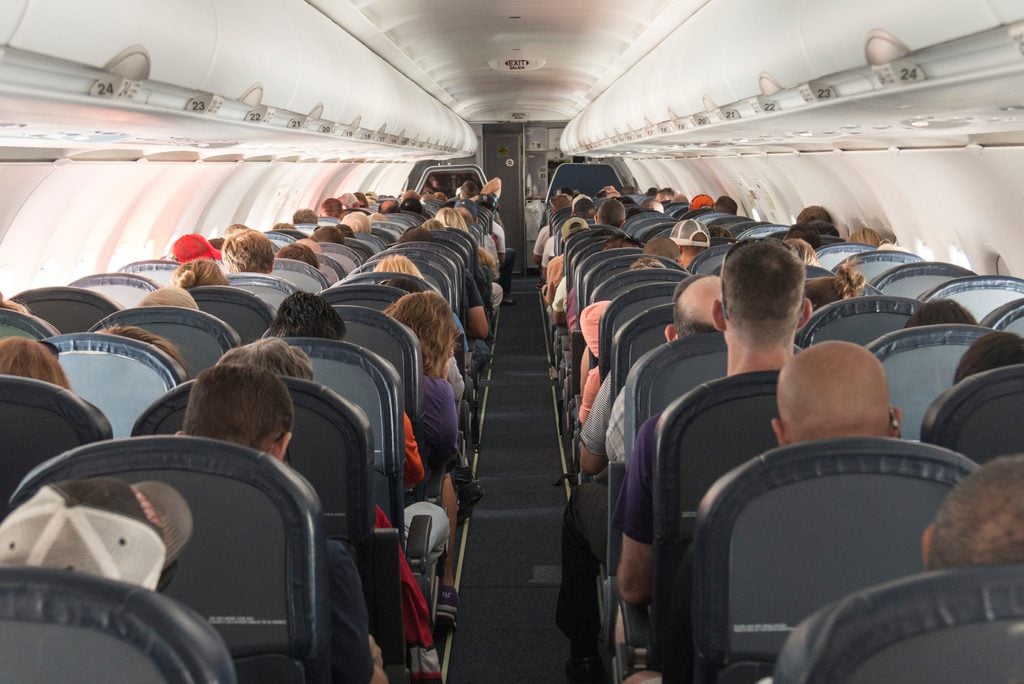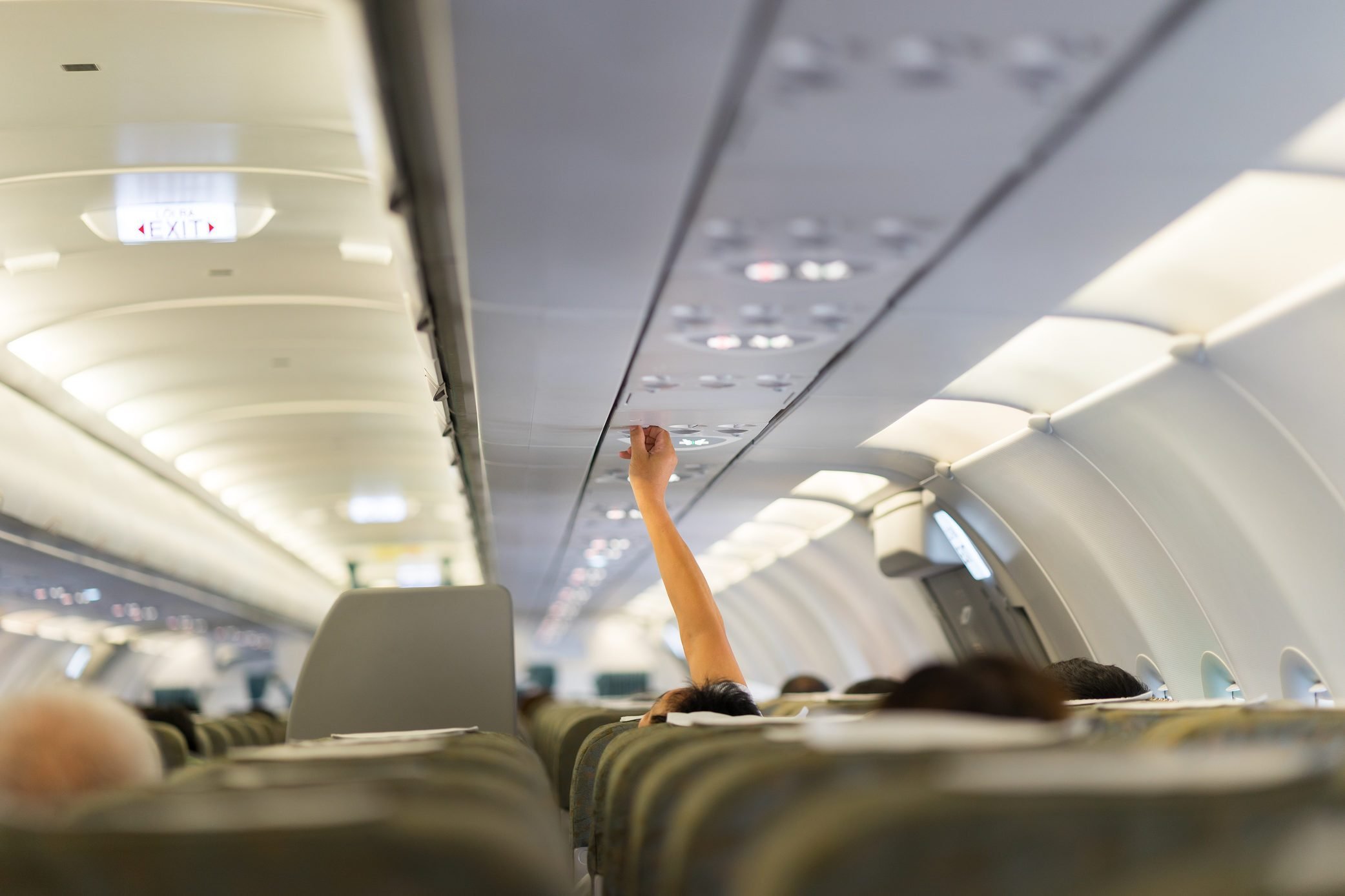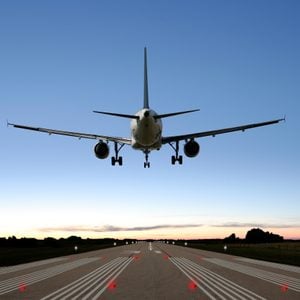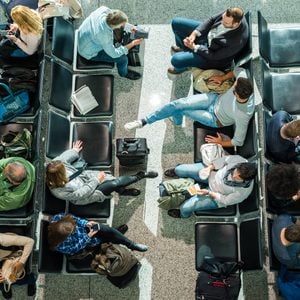The Truth About Recirculated Air on Airplanes
Updated: Jan. 31, 2023

There are plenty of justifiable reasons to be nervous about flying on an airplane right now—but this common myth isn't one of them.
There are lots of factors to consider and questions to ask if you’re planning on getting on a plane during the COVID-19 pandemic. How safe will you be at the airport and on the plane? What new rules will you have to follow? Will the place you’re planning on going even let you in? But there’s one common concern that you don’t need to worry about—one that’s been making fliers nervous since long before the coronavirus pandemic. It involves the air inside the planes. Specifically, that that air is crawling with germs, making you very susceptible to getting sick during your flight—especially now, with a deadly airborne virus running rampant.
What’s the fear here?
This is one of the most popular myths about airplanes because, when you think about it, it’s logical. Airplanes are pressurized, completely enclosed vessels flying through the sky, often for many hours. So the air inside them must be recycled, right? And if the same air is floating around you and your fellow passengers for hours on end, it must be loaded with germs, right?
So, is it true?

It’s not! You don’t have to worry about the safety or cleanliness of the air around you while you’re flying. Perhaps surprisingly, there is fresh air coming into the planes, according to Scott Keyes, Founder and Chief Flight Expert at Scott’s Cheap Flights. “Airplanes aren’t hermetically sealed environments,” he explains. “During a flight, fresh air from outside the plane is being continuously circulated into the cabin through complex vents in the engines.”
But the air isn’t all fresh—yes, some of it is recycled. As Condé Nast Traveler explains, it’s “some fresh air with up to 50 percent [recycled] cabin air.” But that doesn’t mean it’s unclean. The majority of airlines equip their planes with hospital-grade filters specifically for the purpose of keeping the air clean. “These High Efficiency Particulate Air (HEPA) filters cycle the air every few minutes, capturing 99.97 percent of airborne particles,” Keyes says.
But most of the time, your airplane is equipped with germ-trapping filters that keep the air as clean as possible—and that’s pretty clean. “Because of these onboard filters, researchers have found that airplane air is as clean or cleaner than the air in offices, schools, and other indoor settings,” Keyes says. That’s good news—especially now. Find out how many planes are in the sky right now.
The majority?
Yes, not all airplanes have them. The World Health Organization says that “most modern aircraft” have these filters, but if you’re on a short regional flight, for instance, your plane might not have one. “While nearly all mainline jets in the United States have HEPA filters, according to a recent American Airlines press release there is no federally-approved HEPA filter available for Embraer 140/145 regional jets,” Daniel Burnham, Flight Searcher for Scott’s Cheap Flights, told Reader’s Digest.
Luckily, though, you can pretty easily find out if the plane you’re on has these filters, he says. “First of all, you can always check the seat map for your flight when you make a new booking or review an existing reservation—most airlines will tell you here what kind of plane is operating the flight,” he explains. “If you’re flying on a plane with 70 seats or more, you can be confident that it will have HEPA filters installed.” He says that Google Flights is also a helpful resource; you can find the type of aircraft you’ll be on “if you click on the drop-down menu for each flight segment.”
It’s not completely risk-free
While this means that the common worry about germ-loaded plane air is unfounded, it of course doesn’t mean airplanes are completely safe. There’s always a risk of catching something on a plane (or in any public place!), even when COVID-19 is not an issue. “Planes, like most places, will never be 100 percent safe,” Keyes warns. “Though fresh air and filters help, you’ll still be sharing an indoor space with quite a few people for an extended period of time. If a sick person sitting next to you coughs, fresh air and HEPA filters aren’t great armor.”
In addition to these new rules for air travel, just follow the rules you’d follow everywhere else. Wear a mask, bring wipes and hand sanitizer (you can bring up to a 12-oz container through security!), and make sure to wash your hands (or at least use sanitizer) after touching surfaces.


